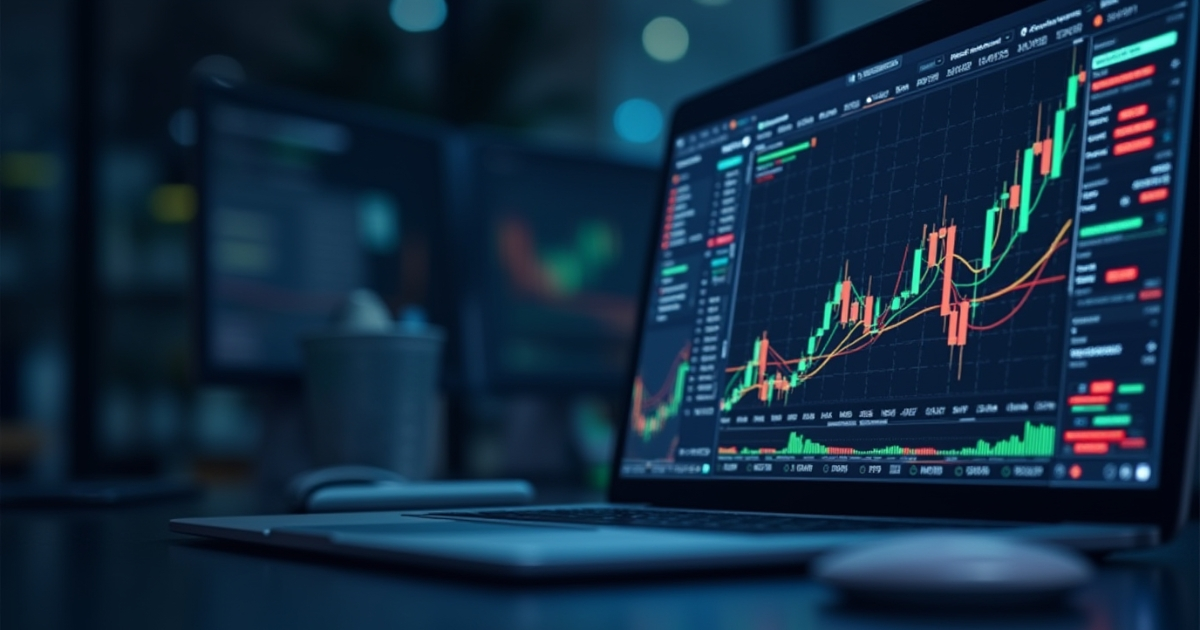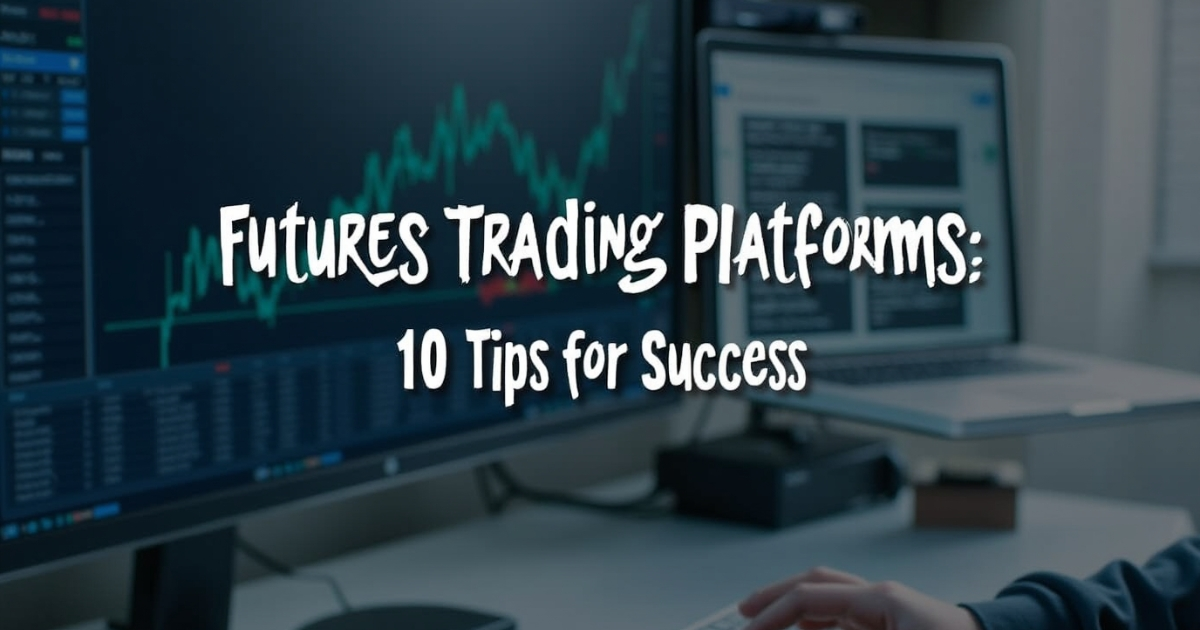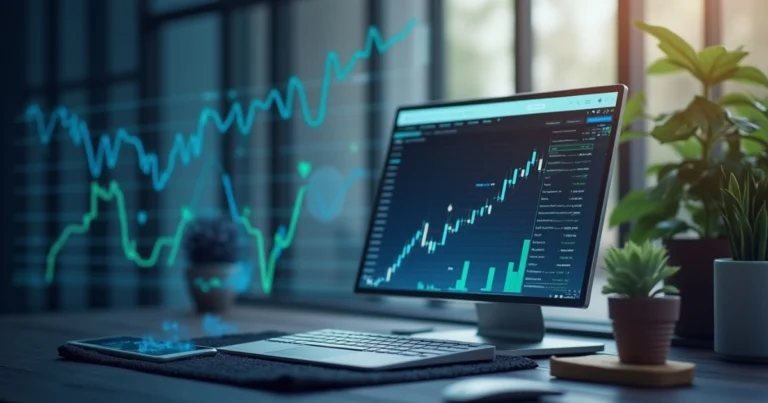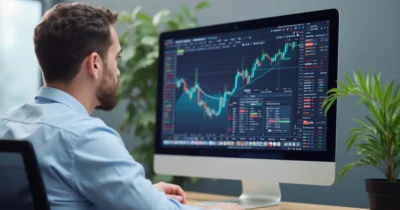Futures trading has become an integral part of the financial world, providing traders with opportunities to leverage market movements and achieve their financial goals. Futures trading platforms are at the heart of this dynamic ecosystem, offering the tools and insights necessary to execute trades efficiently and manage risks effectively.
Whether you are an aspiring trader or a seasoned professional, understanding how to navigate and maximize these platforms can make a significant difference in your trading outcomes.
This article, 10 Tips for Success on Futures Trading Platforms, is designed to equip you with practical advice and strategies for making the most of these powerful tools. From choosing the right platform to mastering advanced features and maintaining discipline, these tips will help you build confidence and competence in your trading journey.
Table of Contents
Understanding the Basics of Futures Trading Platforms

What Are Futures Trading Platforms?
Futures trading platforms are software solutions that allow you to trade futures contracts. These platforms provide essential tools, including live market data, charting capabilities, risk management features, and order execution tools. They cater to traders with varying levels of experience, offering flexibility and functionality.
Key Types of Platforms:
- Desktop Applications: Ideal for advanced users requiring high processing power.
- Web-Based Platforms: Accessible from any browser, offering convenience and ease of use.
- Mobile Platforms: Perfect for traders on the go.
Why Futures Trading Platforms Matter
These platforms streamline trading processes, offering advanced features such as algorithmic trading, real-time analytics, and educational resources. They enable efficient decision-making, crucial in the fast-moving world of futures trading.
10 Actionable Tips for Futures Trading Success

1. Pick the platform that fits your needs best
Selecting a platform that aligns with your goals is critical. Evaluate the interface, fee structures, and available tools before committing.
Comparison Table of Top Platforms:
| Platform Name | Key Features | Fees | Best For |
|---|---|---|---|
| Platform A | Advanced analytics | $4 per trade | Experienced traders |
| Platform B | User-friendly design | $3.50 per trade | Beginners |
| Platform C | Mobile accessibility | $5 per trade | On-the-go professionals |
2. Start with a Demo Account
Demo accounts are invaluable for understanding platform tools and testing strategies without financial risk. Use this feature to:
- Familiarize yourself with the platform’s interface.
- Practice trades in real-time market conditions.
- Build confidence before trading with real capital.
3. Learn to Use Technical Indicators
Technical indicators are your roadmap in futures trading. Platforms often provide tools like moving averages, RSI, and Bollinger Bands.
Tips for Using Indicators Effectively:
- Combine multiple indicators for confirmation.
- Avoid overloading charts to maintain clarity.
- Leverage tutorials provided by the platform to deepen your knowledge.
4. Develop a Solid Trading Plan
A well-defined plan keeps emotions in check and decisions strategic. Outline your:
- Goals: Are you trading for short-term gains or long-term growth?
- Risk Tolerance: How much are you willing to lose per trade?
- Strategy: Define entry and exit points clearly.
5. Leverage Risk Management Tools
Risk management is vital for preserving capital. Many platforms offer features like:
- Stop-Loss Orders: Automatically close trades when a certain loss is reached.
- Position Sizing Calculators: Ensure you trade within your risk limits.
6. Stay Updated on Market Trends
Economic reports, geopolitical events, and market analysis directly impact futures trading. Use platform features like:
- Real-time news alerts.
- Customizable notifications for price movements.
- Daily market summaries.
7. Track and Analyze Your Trades
Keeping a trading journal is essential for evaluating performance. Most platforms provide reporting tools that help you:
- Identify patterns in winning and losing trades.
- Refine strategies based on historical data.
- Measure progress over time.
8. Diversify Your Futures Contracts
Diversification reduces risk and stabilizes returns. Explore different asset classes like commodities, indices, and forex to build a balanced portfolio.
9. Keep Costs in Check
Fees can erode profits if unchecked. Understand the fee structure of your platform, including:
- Per-trade commissions.
- Account maintenance charges.
- Hidden costs like inactivity fees.
10. Stay Disciplined and Patient
Impulsivity can derail your trading journey. Stick to your trading plan, avoid chasing losses, and focus on long-term growth.
FAQs About Futures Trading Platforms
Which futures trading platform is the most beginner-friendly?
Platforms like Platform B with user-friendly interfaces are ideal for beginners.
Can I trade futures with a small account?
Yes, by selecting platforms that offer micro futures contracts and low fees.
Are futures trading platforms secure?
Most reputable platforms adhere to strict security protocols, including encryption and two-factor authentication.
Conclusion
Success on futures trading platforms is achievable with the right mindset and tools. By implementing these ten tips, you can confidently navigate the complexities of futures trading and build a sustainable trading strategy. Remember, patience and discipline are as crucial as the platform you choose.







